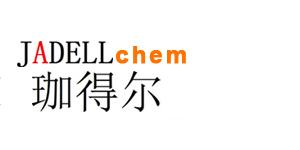Recombinant Human CD40 Ligand 能够在免疫系统的调控中发挥重要作用,包括骨髓祖细胞的发育。
Synonyms
rHuCD40L; CD154; TRAP; TNFSF5; CD40LG; CD40-L ; 重组人 CD40 配体
Species
HumanSource
E. coli Accession
P29965 Gene ID
959 Molecular Weight
Approximately 16.3 kDa AA Sequence
MQKGDQNPQI AAHVISEASS KTTSVLQWAE KGYYTMSNNL VTLENGKQLT VKRQGLYYIY AQVTFCSNRE ASSQAPFIAS LCLKSPGRFE RILLRAANTH SSAKPCGQQS IHLGGVFELQ PGASVFVNVT DPSQVSHGTG FTSFGLLKL Biological Activity
The ED50 is <10 ng/mL as measured by PMB (Peripheral Mononuclear) cells, corresponding to a specific activity of >1.0 × 105 units/mg. Appearance
Lyophilized powder. Formulation
Lyophilized after extensive dialysis against 50 mM Tris-HCl, pH 8.0, 250 mM NaCl buffer. Endotoxin Level
<1 EU/μg, determined by LAL method. Reconstitution
Reconstitute the lyophilized recombinant Human CD40 Ligand (rHuCD40L) to 100 μg/mL using ddH2O. Storage & Stability
Lyophilized recombinant Human CD40 Ligand (rHuCD40L) is stored at -20°C. After reconstitution, it is stable at 4°C for 1 week or -20°C for longer. It is recommended to freeze aliquots at -20°C or -80°C for extended storage. Shipping
Room temperature in continental US; may vary elsewhere. Background
CD40, a member of the TNF receptor family of proteins, is a cell surface protein expressed on B lymphocytes, follicular dendritic cells, normal epithelium, and some epithelial carcinomas. Cells transfected with hCD40-L causes the proliferation of human tonsil B cells in the absence of costimuli and, in the presence of interleukin 4, induces immunoglobulin E secretion from purified human B cells[1]. The CD40 ligand interaction is initially described to play an essential role during membrane-membrane interactions between activated CD4+ T lymphocytes and B cells, as well as between CD4+ T cells and antigen-presenting cells. However, further studies show that soluble CD40 ligand (sCD40L) produced by T cells and platelets[2]. |



